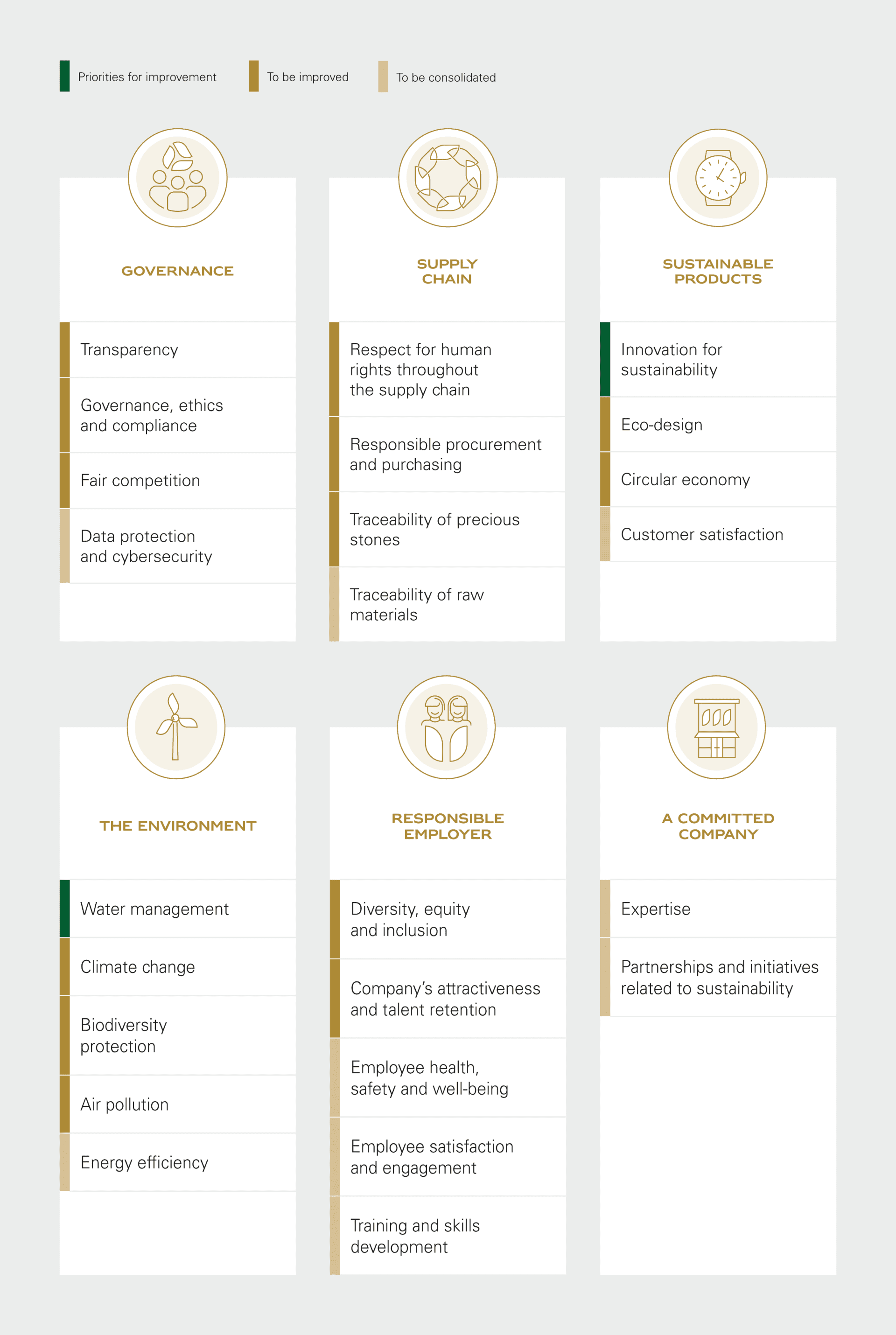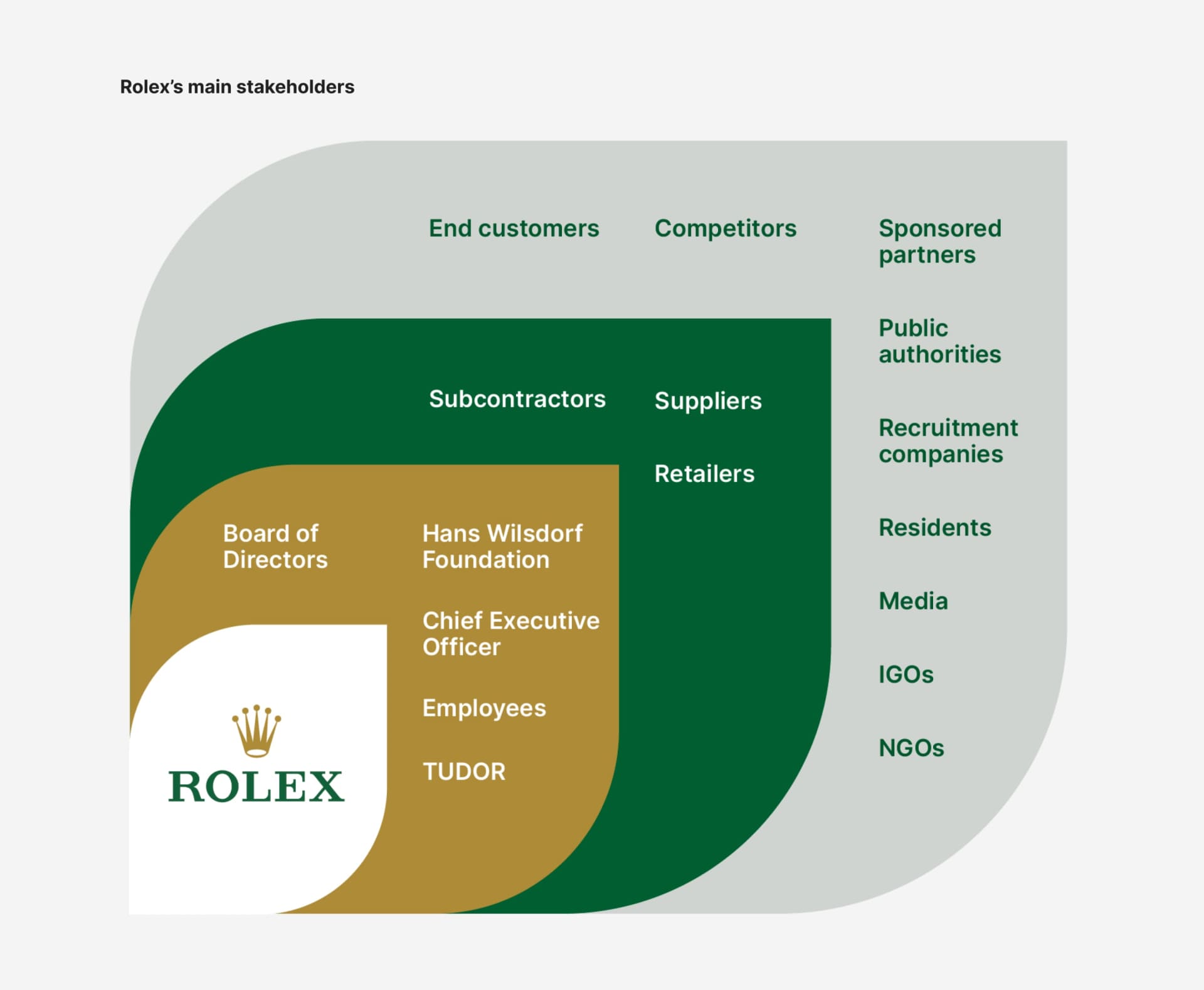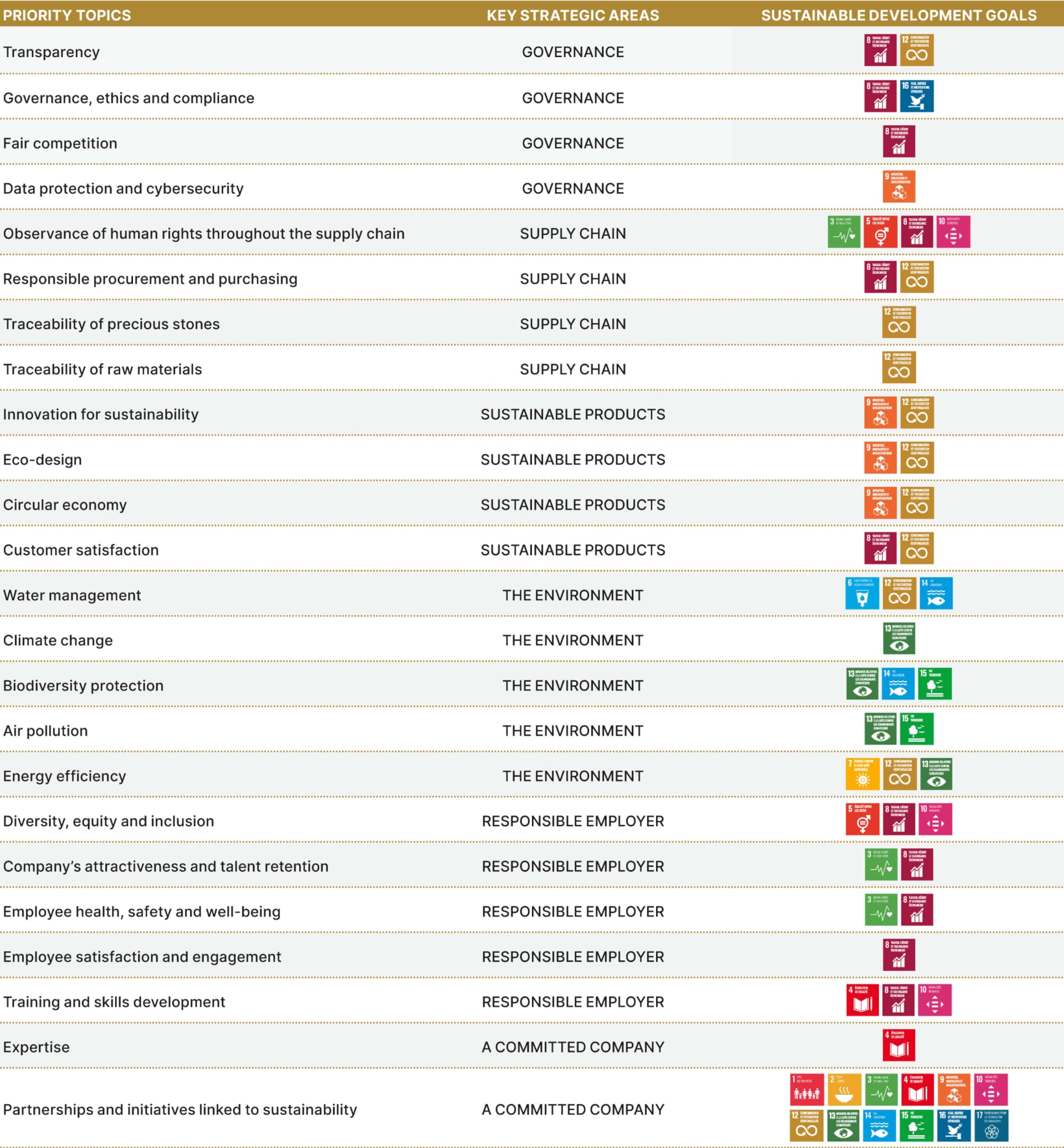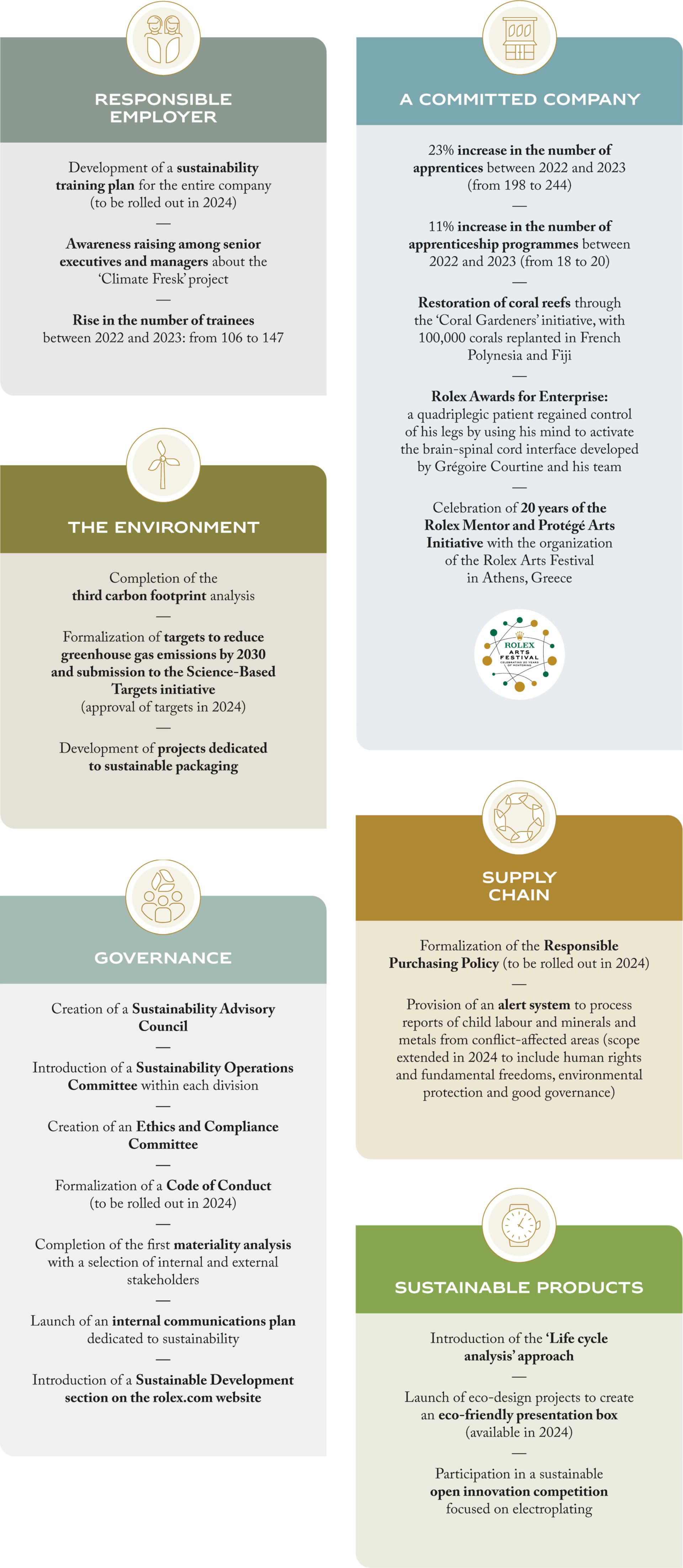Rolex’s priority topics organized by strategic pillar


Stakeholder involvement
Stakeholder dialogue is one of the cornerstones of creating a sustainable business. It makes it possible to measure their expectations regarding business conduct, better understand the impact of the company’s activities, identify areas for improvement and direct its actions accordingly.
Rolex regularly interacts with its stakeholders in a variety of contexts and environments. First and foremost, the brand involves its employees when developing its industrial and commercial practices. It also works with its partners, suppliers, service providers and affiliates to improve its processes and define requirements that are beneficial to society and the environment.

Rolex conducted its first materiality analysis in 2023. This consultative process enabled the brand to identify and prioritize its sustainability topics, based on the expectations of its stakeholders and taking its most significant impacts on the economy, the environment and society into account.
This first materiality analysis was led by Rolex’s Impact and Sustainability Department with the support of an external partner and, internally, the Sustainability Steering Committee.
Identification of material topics
In order to identify its material topics, an initial list of topics – wide-ranging and relating to the company’s business activities and context – was drawn up on the basis of sector intelligence, internal interviews, various impact studies commissioned by the Impact and Sustainability Department, and several recognized reference frameworks, such as the ISO 26000 standard and the United Nations Sustainable Development Goals (SDGs).
Rolex sent an online questionnaire to some of its stake- holders to request their feedback on this initial selection of sustainability topics, which in turn made it possible to collect data to build an initial materiality matrix. The Sustainability Steering Committee carried out an internal assessment of the matrix in terms of the company’s performance and prioritized a list of material topics. This list was then discussed by managers and approved by the Sustainability Strategy Committee, which reports to the Chief Executive Officer.
The results of this exercise will help to refine Rolex’s sustainability strategy and reinforce the company’s action in this area, as each material topic will be the subject of commitments and quantified targets with performance indicators within this framework.


Rolex’s commitments regarding its material topics are a concrete response to the United Nations SDGs. Divided between the brand’s six key strategic areas, these material topics are summarized in the following table, along with the corresponding SDGs.

Since the creation of a Sustainability Strategy Committee in 2020 and the Impact and Sustainability Department, Rolex has strengthened its commitments to sustainable development each year, with notable achievements in 2023.

